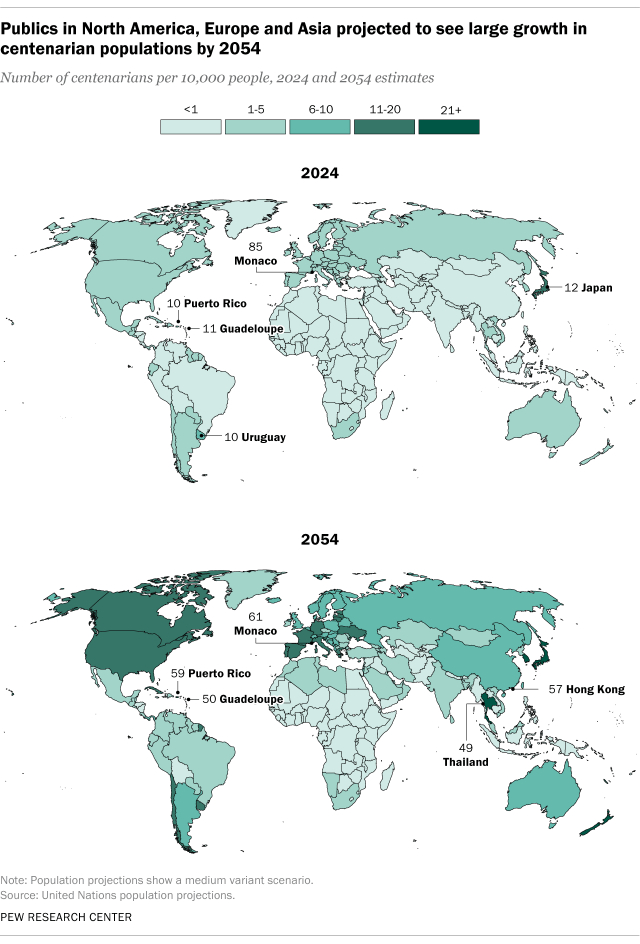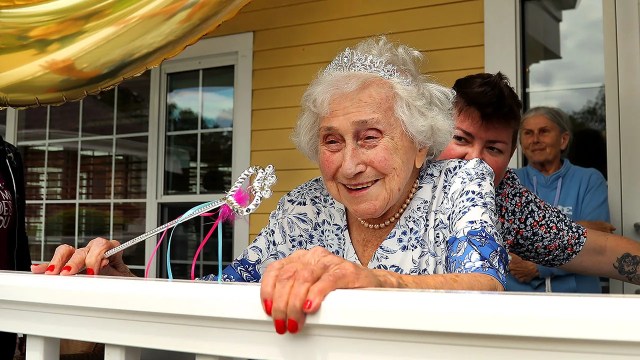
The number of Americans ages 100 and older is projected to more than quadruple over the next three decades, from an estimated 101,000 in 2024 to about 422,000 in 2054, according to projections from the U.S. Census Bureau. Centenarians currently make up just 0.03% of the overall U.S. population, and they are expected to reach 0.1% in 2054.
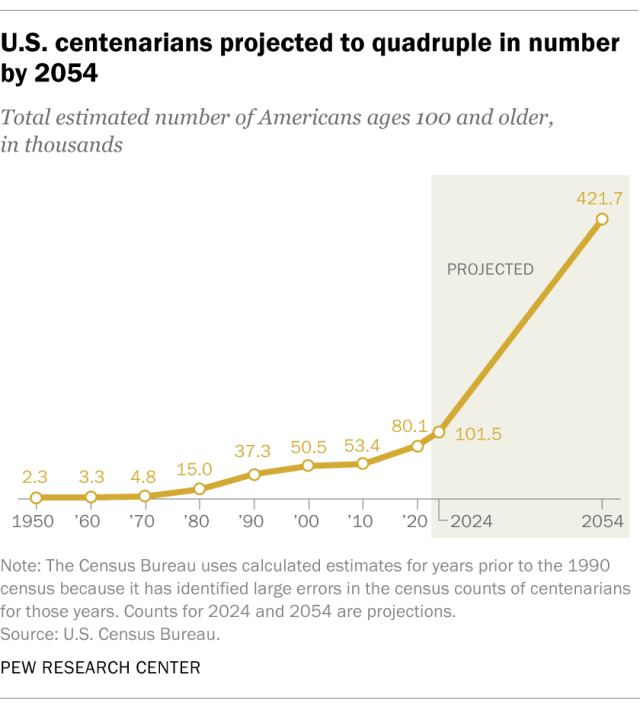
The number of centenarians in the United States has steadily ticked up since 1950, when the Census Bureau estimates there were just 2,300 Americans ages 100 and older. (The Census Bureau uses calculated estimates for years prior to the 1990 census because it has identified large errors in the census counts of centenarians for those years.)
In the last three decades alone, the U.S. centenarian population has nearly tripled. The 1990 census counted around 37,000 centenarians in the country.
Today, women and White adults make up the vast majority of Americans in their 100s. This trend is largely projected to continue, though their shares will decrease:
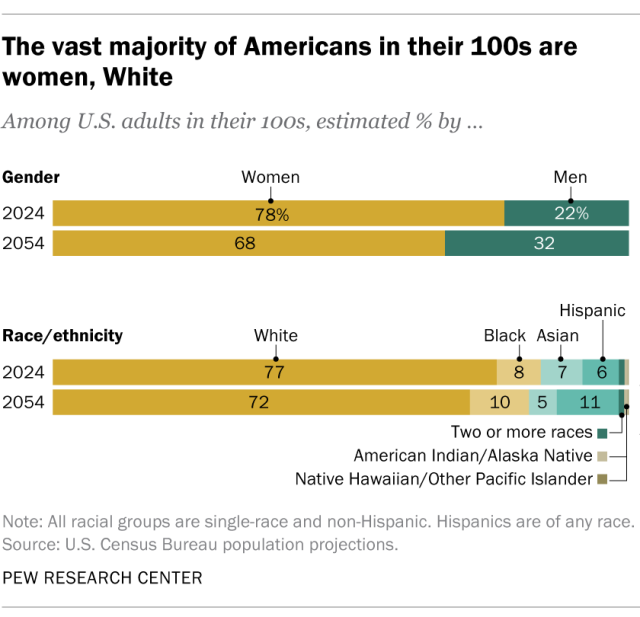
- In 2024, 78% of centenarians are women, and 22% are men. In 30 years, women are expected to make up 68% of those ages 100 and older, while 32% will be men.
- 77% of today’s centenarians are White. Far fewer are Black (8%), Asian (7%) or Hispanic (6%). And 1% or fewer are multiracial; American Indian or Alaska Native; or Native Hawaiian or other Pacific Islander. By 2054, White and Asian adults are projected to make up smaller shares of centenarians (72% and 5%, respectively), while the shares who are Hispanic (11%) or Black (10%) will be larger. (All racial categories here are single-race and non-Hispanic. Hispanics are of any race.)
The U.S. population overall is expected to trend older in the coming decades as life expectancies increase and the birth rate declines. There are currently roughly 62 million adults ages 65 and older living in the U.S., accounting for 18% of the population. By 2054, 84 million adults ages 65 and older will make up an estimated 23% of the population.
Even as the 65-and-older population continues to grow over the next 30 years, those in their 100s are projected to roughly double as a percentage of that age group, increasing from 0.2% of all older Americans in 2024 to 0.5% in 2054.
Centenarians around the world
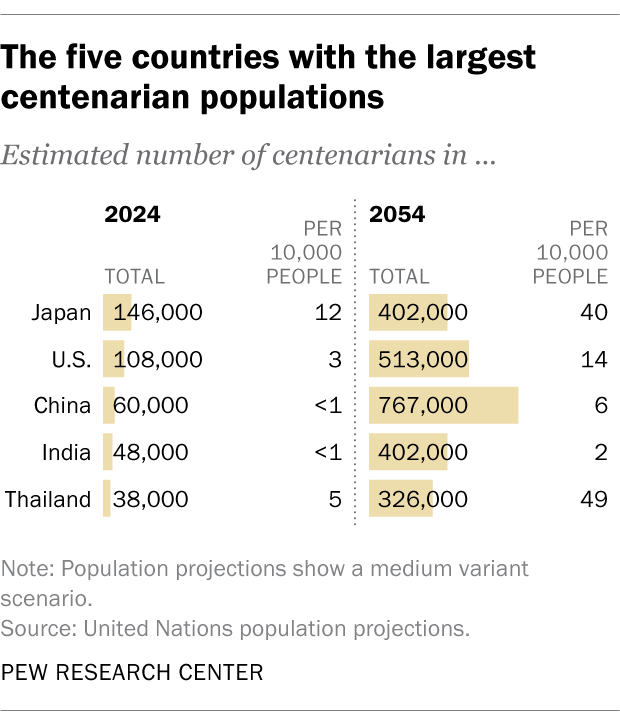
The world is home to an estimated 722,000 centenarians, according to the United Nations’ population projections for 2024. The U.S. centenarian population is the world’s second largest – the UN estimates it at 108,000, slightly larger than the Census Bureau’s estimate.
Japan is the country with the greatest number of people in their 100s, at 146,000. China (60,000), India (48,000) and Thailand (38,000) round out the top five.
In each of these countries, centenarians make up less than 1% of the overall population, but combined, they account for more than half (55%) of the world’s population ages 100 and older.
Looked at another way, centenarians make up a bigger proportion of the total population in Japan, Thailand and the U.S., and smaller shares in China and India, which have large but relatively young populations. There are about 12 centenarians for every 10,000 people in Japan, five for every 10,000 in Thailand and three for every 10,000 in the U.S. That compares with fewer than one centenarian for every 10,000 people in China and India.
By 2054, the global centenarian population is projected to grow to nearly 4 million. China is expected to have the largest number of centenarians, with 767,000, followed by the U.S., India, Japan and Thailand. As a proportion, centenarians are projected to account for about 49 out of every 10,000 people in Thailand, 40 of every 10,000 in Japan and 14 of every 10,000 in the U.S. Six out of every 10,000 people in China will be centenarians, as will about two of every 10,000 in India.
